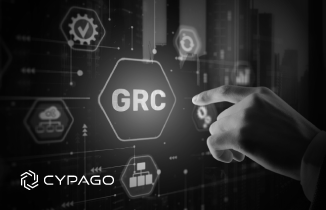How many GRC frameworks does it take to overwhelm a team? It’s a situation all too common among enterprises today. Amidst today’s complex regulatory landscape, businesses are actively pursuing comprehensive framework management solutions for seamless compliance navigation. Traditional or legacy GRC tools, once reliable, now fall short in the face of dynamic regulatory demands. Introducing Cypago: a revolutionary Cyber GRC Automation (CGA) solution that surpasses compliance norms, delivering a streamlined and efficient approach to cutting-edge framework management solutions.
Unveiling the Limitations of Legacy Tools
Legacy tools, long considered the backbone of compliance efforts, fall short when confronted with the challenges of contemporary regulatory frameworks. These tools lack the comprehensive automation capabilities necessary for tackling intricate processes, leaving organizations burdened with manual tasks that not only consume time but are also error-prone. Moreover, intelligent mapping across diverse frameworks remains a significant hurdle, hindering businesses from maintaining a holistic view of their compliance status.
Why Single-Compliance Tools Fall Short
One-off compliance tools often offer fast, easy paths for meeting the requirements of a few specific frameworks – but they don’t stand the test of scalability and automation for the growing enterprise. Automation capabilities are often limited; customization tools are restricted to renaming requirements or other small changes; and it can be difficult to track whether the same evidence can, or should be, collected and analyzed for multiple frameworks. In other words, the more complex the business needs, the more there is a need for a framework management solution which can handle Cyber GRC holistically – and at maximum ROI.
The Cypago Advantage: A Paradigm Shift in Framework Management Solutions
Cypago is not just a compliance tool; it’s a strategic partner that understands the intricate dance between businesses and the regulatory frameworks they must adhere to. What sets Cypago apart is its ability to automate processes, control evidence collection, and offer intelligent mapping across a myriad of frameworks, all while accommodating custom frameworks tailored to the unique needs of large enterprises.
Automating Compliance: A Game-Changer for Efficiency
One of the standout features of the Cypago CGA platform is its robust automation capabilities. Unlike legacy tools that rely on manual intervention, Cypago automates key compliance processes, reducing the risk of human error and enhancing efficiency. This automation not only saves valuable time but also ensures that compliance is consistently upheld across different frameworks.
Intelligent Mapping: Navigating the Framework Maze
Cypago’s intelligent mapping feature provides organizations with a comprehensive view of their compliance landscape. It goes beyond a checklist approach, offering a dynamic mapping that adapts to changes in regulations and frameworks. This not only simplifies the compliance journey but also empowers businesses to proactively address emerging challenges.
Custom Frameworks: Tailoring Compliance to Your Needs
In a regulatory environment where one size does not fit all, Cypago stands out by accommodating custom frameworks. Large enterprises often face the daunting task of complying with vast jurisdictions and proprietary client audits or questionnaires. Cypago understands these unique challenges and provides the flexibility needed to create and manage custom frameworks seamlessly.
The Path Forward: Embracing Cypago for Future-Ready Compliance
In conclusion, Cypago is not merely a tool; it’s a strategic ally in the pursuit of compliance excellence. Its automation prowess, intelligent mapping, and support for custom frameworks make it a game-changer for enterprises seeking to optimize their framework management solutions. As you contemplate the next steps in your compliance journey, consider the Cypago CGA platform – where innovation meets compliance, and beyond.
To learn more about Cypago’s Cyber GRC automation platform, read our Solution Brief.




